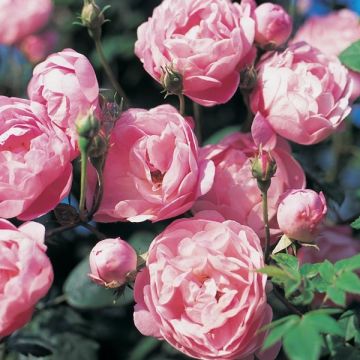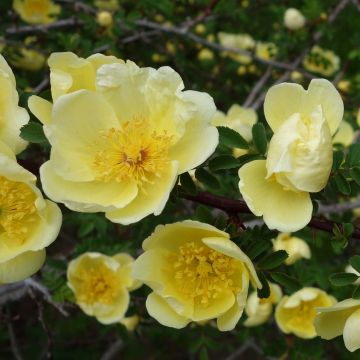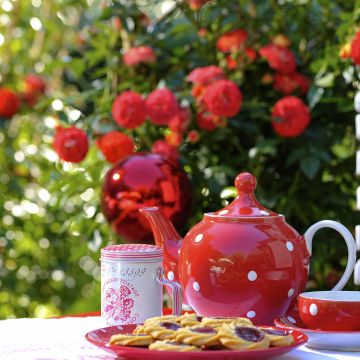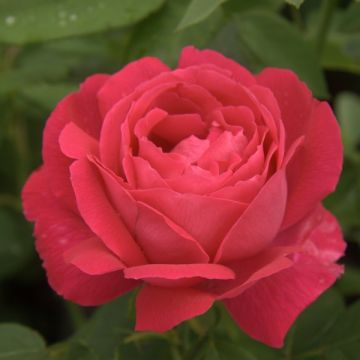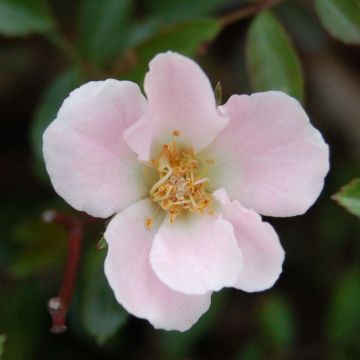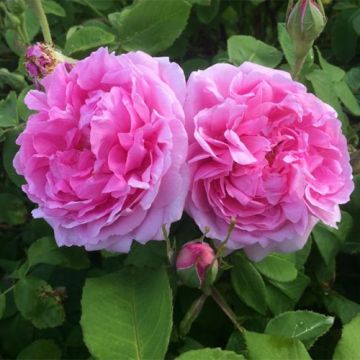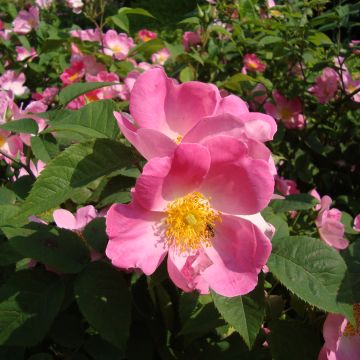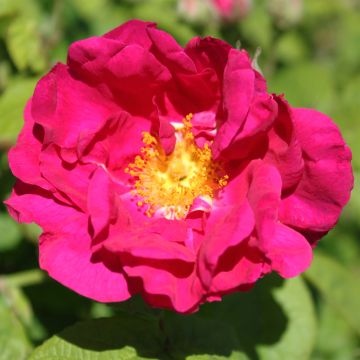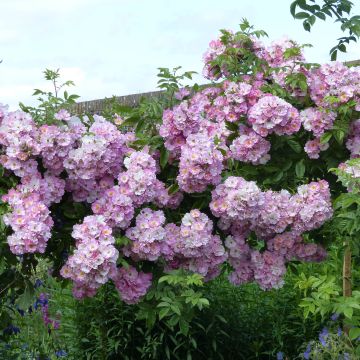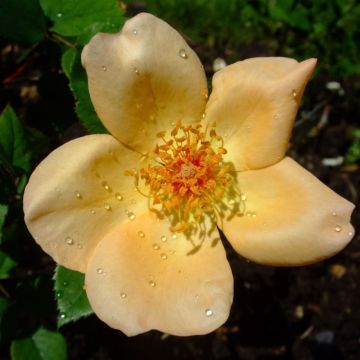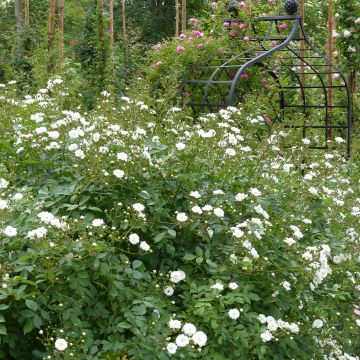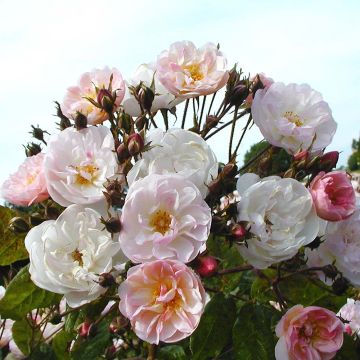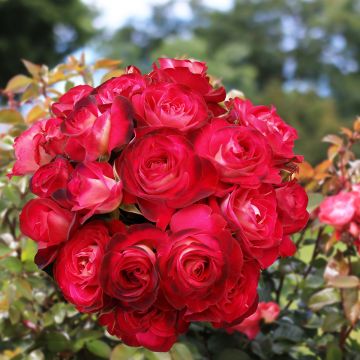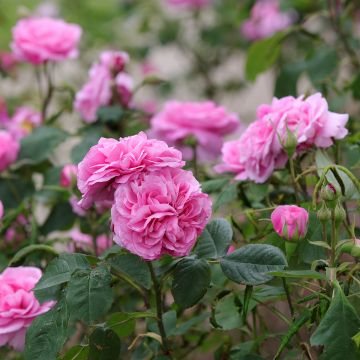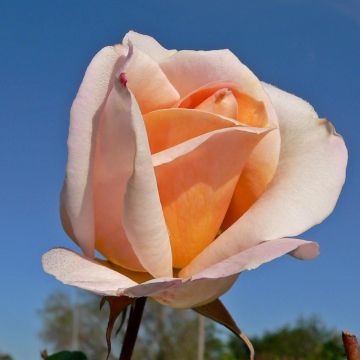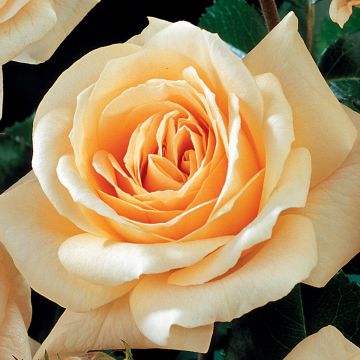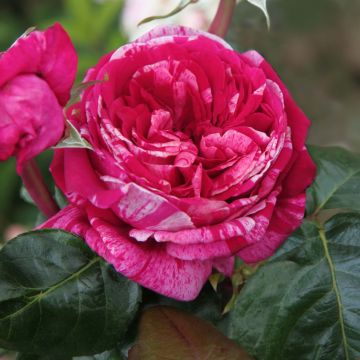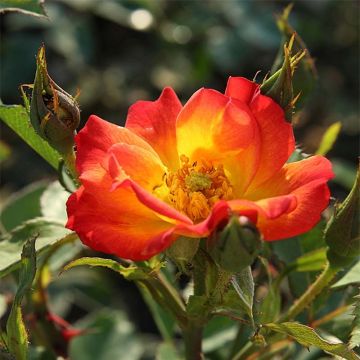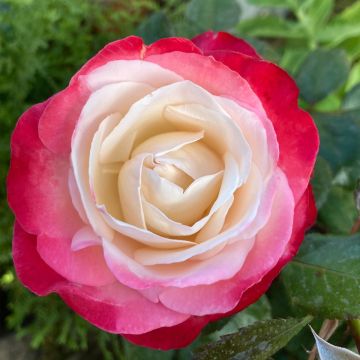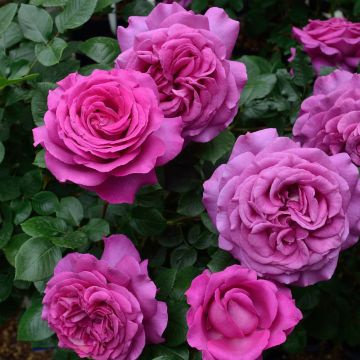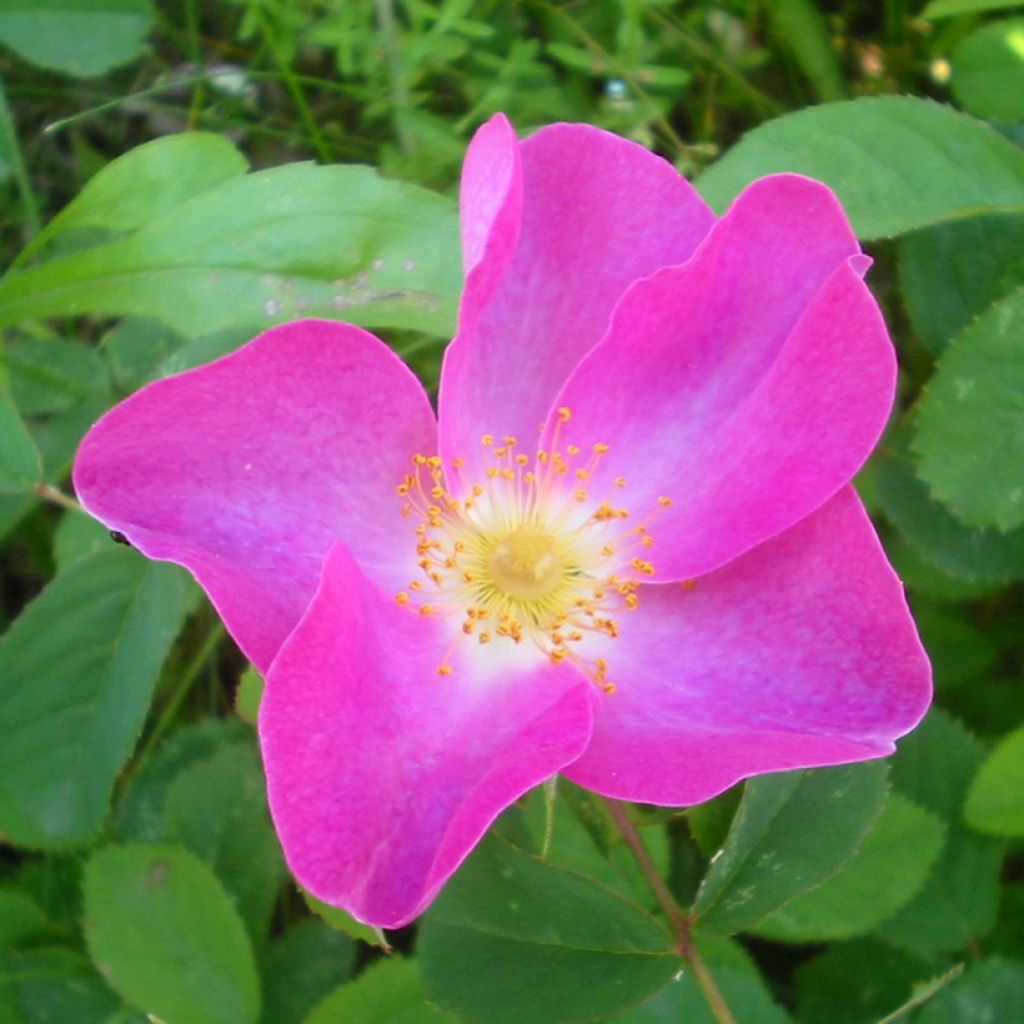

Rosa gallica - Gallic Rose
Rosa gallica - Gallic Rose
Rosa gallica
This item cannot be shipped to the selected country
Delivery charge from €5.90
Delivery charge from €5.90
Delivery to Corse prohibited
More information
Schedule delivery date,
and select date in basket
This plant carries a 24 months recovery warranty
More information
We guarantee the quality of our plants for a full growing cycle, and will replace at our expense any plant that fails to recover under normal climatic and planting conditions.
From €5.90 for pickup delivery and €6.90 for home delivery
Express home delivery from €8.90.
From €5.90 for pickup delivery and €6.90 for home delivery
Express home delivery from €8.90.
Delivery to Corse prohibited: UE law prohibits the import of this plant from mainland France to Corse as part of the fight against Xylella fastidiosa. Please accept our sincere apologies.
More information
Does this plant fit my garden?
Set up your Plantfit profile →
Description
Rosa gallica, the French rose or Provence rose, is a native wild rose in France, rarely offered for sale. Cultivated since Roman times for its ornamental and medicinal properties, it was highly appreciated in the Middle Ages in France, where it gave rise to the famous Rose of Provins, used for its therapeutic virtues. This rose captivates with its robustness and timeless beauty. Its unique but abundant flowering, with large pink to deep red dog roses, exudes a sweet fragrance. Covered with flowers in early summer, it then produces charming red fruits (hips) in autumn. Very hardy, drought-tolerant and disease-resistant, Rosa gallica requires little maintenance. A treasure for traditional or naturalistic gardens!
Rosa gallica is native to Europe, from France to the Balkans, Ukraine, and the Caucasus. This species is also found in Asia Minor.
This wild rose mainly grows on edges, in hedges, on embankments, along roads and rural paths, and sometimes in clearings. It is more common in hills and grows up to 1,300 m altitude. The plant grows on various types of substrates but seems to prefer silicicolous soils (sandy or gritty). The populations, although relatively numerous, are scattered and often small.
The French rose belongs, like all roses, to the rose family. It is a small bush generally between 40 cm and 1m in height (up to 1.60 m) with a thick and running root system. Its stems are erect, more or less flexible, slightly branched, and covered with glandular hairs that disappear on older parts. They are also armed with prickles of various sizes: some strong and hooked, others finer and straight. The foliage is deciduous and resistant to rose diseases. The leaves are compound, with 3 to 7 leaflets (often 5), with narrow stipules fused to the petiole. The ovate leaflets measure 1.5 to 5 cm long by 1.5 to 3 cm wide. They are thick, sometimes leathery, dull green or slightly greyish and often hairy on the underside. They have prominent veins and are weakly serrated. The flowers are large: their diameter ranges from 5-6 cm to 8-9 cm. They are solitary or in small groups of 2 to 4 and highly fragrant. The floral peduncles are hairy and covered with stiff or glandular hairs. Each flower is enclosed in five green sepals, much longer than the floral bud, glandular-velvety on their inner surface. The petals are generally bright pink or velvety red, but occasionally pale pink or even white. Numerous stamens are present, with yellow anthers that darken over time. This flowering is visited by pollinating insects. The fruit is a bright red hip, of variable shape (almost globular or ovate), more or less hairy or glandular. Flowering occurs in early summer (May-July) and fruiting extends until September.
There are numerous species of botanical or wild roses, the distinction of which can be complex. In Rosa gallica, 5 distinct forms have been described, some considered as subspecies or separate species. Various interspecific hybrids or presumed ones have also been identified, further complicating the classification. These variations could reflect significant genetic diversity within the populations.
The Provence rose withstands everything, without treatment, lingers in old gardens and takes over abandoned embankments when grown on its own roots. In a word, it thrives everywhere. With its compact habit and lovely flowering, it is ideal for creating large flower borders or for designing beds that catch the eye in early summer. It can also be planted as a low hedge and fits perfectly in a rustic or naturalistic garden. Pair it, for example, with other wild roses like field rose (Rosa arvensis), dog rose (Rosa canina), burnet rose (Rosa pimpinellifolia). Also consider mixing these roses with a small white spring spirea (Spiraea prunifolia 'Plena'), an Afghan lilac, and a compact winged spindle (Euonymus alatus 'Fire Ball').
Report an error about the product description
Plant habit
Flowering
Foliage
Botanical data
Rosa
gallica
Rosaceae
Rosa arvina, Rosa assimilis, Rosa austriaca
Western Europe
Other Traditional Roses
Planting and care
Plant your Gallica Rose in a sunny or lightly shaded location. Gallica roses are tolerant but do not appreciate excess limestone. They will adapt to any garden as long as the soil is well worked, not too heavy, and sufficiently rich. To plant your rose, work the soil well by crumbling it and adding a base fertiliser such as dried blood or dehydrated horn at the bottom of the planting hole. Water generously after planting to remove air pockets. Water regularly for a few weeks to facilitate rooting.
Pruning old roses mainly involves removing faded flowers gradually, unless you want to keep the decorative berries.
Avoid pruning to maintain an interesting bushy form.
However, at the end of winter (in March), you can still remove branches located in the middle of the bush that may suffocate it.
Roses are often spotted or unsightly at the end of summer, but this does not affect their development. These spots are not harmful to the rose; it is a natural phenomenon.
Planting period
Intended location
Care
This item has not been reviewed yet - be the first to leave a review about it.
Fragrant Roses
Haven't found what you were looking for?
Hardiness is the lowest winter temperature a plant can endure without suffering serious damage or even dying. However, hardiness is affected by location (a sheltered area, such as a patio), protection (winter cover) and soil type (hardiness is improved by well-drained soil).

Photo Sharing Terms & Conditions
In order to encourage gardeners to interact and share their experiences, Promesse de fleurs offers various media enabling content to be uploaded onto its Site - in particular via the ‘Photo sharing’ module.
The User agrees to refrain from:
- Posting any content that is illegal, prejudicial, insulting, racist, inciteful to hatred, revisionist, contrary to public decency, that infringes on privacy or on the privacy rights of third parties, in particular the publicity rights of persons and goods, intellectual property rights, or the right to privacy.
- Submitting content on behalf of a third party;
- Impersonate the identity of a third party and/or publish any personal information about a third party;
In general, the User undertakes to refrain from any unethical behaviour.
All Content (in particular text, comments, files, images, photos, videos, creative works, etc.), which may be subject to property or intellectual property rights, image or other private rights, shall remain the property of the User, subject to the limited rights granted by the terms of the licence granted by Promesse de fleurs as stated below. Users are at liberty to publish or not to publish such Content on the Site, notably via the ‘Photo Sharing’ facility, and accept that this Content shall be made public and freely accessible, notably on the Internet.
Users further acknowledge, undertake to have ,and guarantee that they hold all necessary rights and permissions to publish such material on the Site, in particular with regard to the legislation in force pertaining to any privacy, property, intellectual property, image, or contractual rights, or rights of any other nature. By publishing such Content on the Site, Users acknowledge accepting full liability as publishers of the Content within the meaning of the law, and grant Promesse de fleurs, free of charge, an inclusive, worldwide licence for the said Content for the entire duration of its publication, including all reproduction, representation, up/downloading, displaying, performing, transmission, and storage rights.
Users also grant permission for their name to be linked to the Content and accept that this link may not always be made available.
By engaging in posting material, Users consent to their Content becoming automatically accessible on the Internet, in particular on other sites and/or blogs and/or web pages of the Promesse de fleurs site, including in particular social pages and the Promesse de fleurs catalogue.
Users may secure the removal of entrusted content free of charge by issuing a simple request via our contact form.
The flowering period indicated on our website applies to countries and regions located in USDA zone 8 (France, the United Kingdom, Ireland, the Netherlands, etc.)
It will vary according to where you live:
- In zones 9 to 10 (Italy, Spain, Greece, etc.), flowering will occur about 2 to 4 weeks earlier.
- In zones 6 to 7 (Germany, Poland, Slovenia, and lower mountainous regions), flowering will be delayed by 2 to 3 weeks.
- In zone 5 (Central Europe, Scandinavia), blooming will be delayed by 3 to 5 weeks.
In temperate climates, pruning of spring-flowering shrubs (forsythia, spireas, etc.) should be done just after flowering.
Pruning of summer-flowering shrubs (Indian Lilac, Perovskia, etc.) can be done in winter or spring.
In cold regions as well as with frost-sensitive plants, avoid pruning too early when severe frosts may still occur.
The planting period indicated on our website applies to countries and regions located in USDA zone 8 (France, United Kingdom, Ireland, Netherlands).
It will vary according to where you live:
- In Mediterranean zones (Marseille, Madrid, Milan, etc.), autumn and winter are the best planting periods.
- In continental zones (Strasbourg, Munich, Vienna, etc.), delay planting by 2 to 3 weeks in spring and bring it forward by 2 to 4 weeks in autumn.
- In mountainous regions (the Alps, Pyrenees, Carpathians, etc.), it is best to plant in late spring (May-June) or late summer (August-September).
The harvesting period indicated on our website applies to countries and regions in USDA zone 8 (France, England, Ireland, the Netherlands).
In colder areas (Scandinavia, Poland, Austria...) fruit and vegetable harvests are likely to be delayed by 3-4 weeks.
In warmer areas (Italy, Spain, Greece, etc.), harvesting will probably take place earlier, depending on weather conditions.
The sowing periods indicated on our website apply to countries and regions within USDA Zone 8 (France, UK, Ireland, Netherlands).
In colder areas (Scandinavia, Poland, Austria...), delay any outdoor sowing by 3-4 weeks, or sow under glass.
In warmer climes (Italy, Spain, Greece, etc.), bring outdoor sowing forward by a few weeks.

































